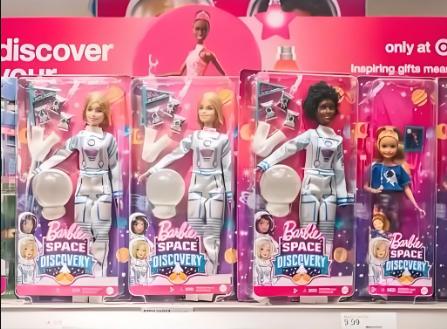
Recently, Mattel, the American manufacturer of Barbie dolls, stated that due to the recent US tariff policy, it plans to increase the prices of toys. Mattel said in its earnings report that the company will raise the prices of its products sold in the United States "if necessary" to offset the cost increase caused by the tariff policy. Mattel said that tariffs would cause the company to lose 270 million US dollars this year. On the 5th, Inon Krez, the CEO of Mattel, called for the cessation of tariffs on toy products. In fact, the prices of some Mattel toys have risen. Analysis by Telsey Consulting Group in the United States shows that in mid-April, the prices of some Barbie dolls sold in the United States had risen by 42.9% within a week.
The implementation of tariff policies undoubtedly dealt a heavy blow to many industries, and at the same time brought complex and multi-faceted impacts to the business level. The first is the impact on costs and profits. The US government's imposition of tariffs on imported toys directly leads to an increase in the import costs of toy enterprises. Take Mattel as an example. Due to the tariff policy, Mattel is expected to lose 270 million US dollars in 2025. The prices of some products have risen by 42.9% within a week. The profit margin has long been hovering in single digits, and the tariff costs cannot be absorbed internally. The increase in costs has compressed the profit margins of toy enterprises. To maintain their market share, enterprises may have to absorb some of the costs themselves or pass them on to consumers. However, this will undoubtedly have a serious impact on the profitability of the enterprises. For instance, the price of Barbie dolls in the United States is expected to increase by 15% to 20%. This may further dampen consumers' purchasing intentions and thereby affect the sales and profits of enterprises.
The second is the impact on the supply chain. The tariff policy has forced American toy enterprises to reevaluate their supply chain layout. Some enterprises may choose to transfer their production lines to other countries or regions to avoid high tariffs. However, such adjustments are not achieved overnight. They require a significant investment of time and funds and may face new supply chain risks. For instance, Mattel plans to transfer its production lines to alternative countries such as Mexico and Vietnam. However, the production capacity in these countries can only handle 30% of the orders, and the costs soar after the transfer. A survey by the Toy Association of America shows that 80% of American toy companies have been forced to postpone orders due to tariffs, which may cause shelf vacancies during this year's holiday season. Mattel requires its contract manufacturers not to apply the process to other brands, making it difficult for Chinese enterprises to accumulate experience in high-end manufacturing. Even if they turn to Southeast Asia for contract manufacturing, Chinese enterprises still have to provide molds and raw materials, and their profit margins have shrunk from 15% in the past to 5%, turning them into "invisible laborers".
Thirdly, there is the impact on business and consumers. The tariff policy has led to fluctuations in the prices of toys in the US market, providing opportunities for toy manufacturers from other countries and regions to enter the US market and intensifying market competition. The increase in toy prices may lead consumers to reduce the quantity of toys they purchase or choose cheaper alternatives. Especially against the backdrop that the US consumer confidence index has dropped to its lowest level since the outbreak of the pandemic, high-priced toys may completely curb demand. In 2024, the retail sales of toys in the United States decreased by 6.3% year-on-year, marking the largest decline in a decade. A survey by the Toy Association of America shows that 80% of American toy companies have been forced to postpone orders due to tariffs, which may cause shelf vacancies during this year's holiday season. This will directly affect consumers' shopping experience and satisfaction.
The fourth is the impact on the global trade environment. Tariff policies may trigger retaliatory measures among trading partners, further intensifying the tensions in global trade. The current framework of the World Trade Organization (WTO) is inadequate in dealing with digital trade and tariff disputes. The implementation of tariff policies has exposed the lag and insufficiency of the multilateral trading system in responding to new types of trade barriers.
To sum up, the US toy industry has become a major area affected by tariffs, triggering multiple business crises. At the same time, US toy enterprises are facing supply chain crises, and it is also very difficult for the industry to save itself and restructure the global industrial chain. Meanwhile, US consumers and enterprises are paying a heavy price for the policies.

In December 2025, the US banking industry was once again shrouded in the shadow of risks.
In December 2025, the US banking industry was once again sh…
In December 2025, US President Trump signed an executive or…
Recently, the barometer of the US economy has shown unstabl…
Recently, the dispute over the digital services tax between…
Recently, the International Monetary Fund (IMF) and the Org…
A clear consensus has emerged in Europe's economic sphere: …